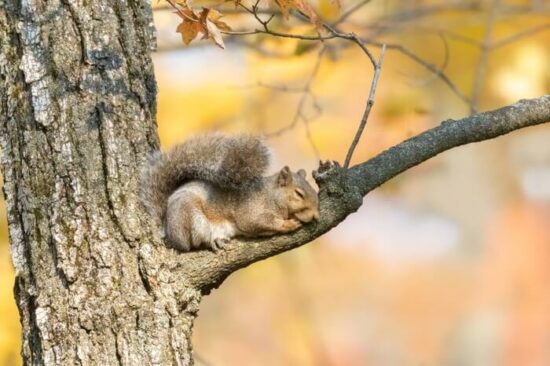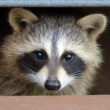Many homeowners want to know where squirrels sleep at night. It doesn’t matter if they view these creatures as pests or not, it’s hard to imagine them getting any shut-eye!
This guide will teach you where squirrels sleep at night, when they sleep, and how much they sleep.
Table of Contents
Where Do Squirrels Sleep?
When most people think of squirrels, they imagine these energetic creatures (or pests) scaling the treetops and investigating any available food source they can during the day. Most encounters occur in the early morning or middle of the day.
So, where do squirrels sleep at night?
The answer to that burning question depends on the type of squirrel and the region it inhabits. There are more than 200 different squirrel species in the world. However, they all fall into one of three types.
These types are ground squirrels, tree squirrels, and flying squirrels. They look and behave similarly, but there are some differences when it comes to where these squirrels sleep.
Ground Squirrels
Ground squirrels are native to more temperate parts of North America. As their category name would imply, these squirrels prefer to stick to ground level. They’re fully capable of climbing trees and fences.
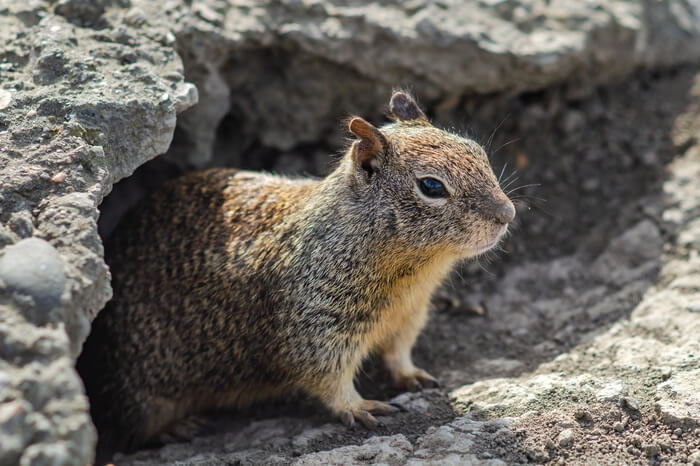
But when it comes to figuring out where these squirrels sleep (and nest), you’ll need to look below.
Usually found in open fields, well-irrigated pastures, and grassy meadows, these squirrels create tunnels to sleep in at night. These aren’t tiny holes in the ground, either!
Many ground squirrels create tunnels as long as 30 feet long! Not only that, but many dig a strategic network of tunnels with halls that serve different purposes. For example, one section might be dedicated to sleeping and nesting while another part of the tunnel is for food storage only. The latter area comes in handy when squirrels begin to hoard food in preparation for long periods of inactivity.
The unique thing about ground squirrels is that they like to keep things tidy. As a result, you’re not going to see dirt mounds everywhere like you would with other burrowing mammals. While moles and gophers are notorious for mucking up yards as they navigate underground, squirrel tunnel entrances are clean and relatively discreet.
Location is everything when it comes to the ground squirrel nests where they sleep at night. Underground lairs are susceptible to issues like flooding and collapse. Plus, other animals that like to dig can quickly disturb the area and ruin a squirrel’s hard work.
These critters are a lot smarter than most think. They take time to choose a nesting spot to make sure that it’s suitable for the long haul. Underground tunnels usually occur on sloped ground, near large rocks, or hidden underneath logs. Unique physical objects in the area can serve as another form of protection while also deterring digging.
Seeing multiple holes is common. Squirrels like to have a few different escape routes just in case they have to flee at a moment’s notice. As the main entrance, additional access points are small and unobtrusive.
These squirrels only need openings of about four inches in diameter to get in.
Quick Tip: Underground tunnels require a great deal of maintenance, but ground squirrels are more than willing to put in the work. They typically use the same burrowed homes for sleeping, hibernation, or estivation. It also serves as protection against difficult weather conditions in the area.
Tree Squirrels
Tree squirrels tend to be more prevalent in the wild. Some of the most popular tree-dwelling species include red, gray, and fox squirrels.
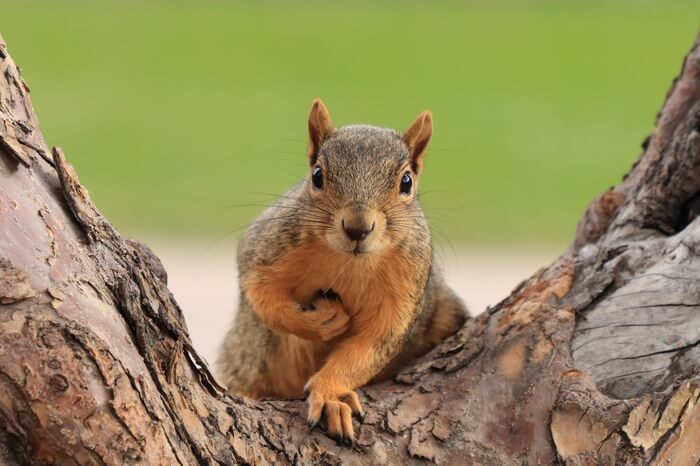
Spending most of their time navigating treetops, these critters like to set up nests as high up as 45 feet! While they can venture to ground level in search of food, the natural protection offered by great heights is where these squirrels sleep.
Tree squirrels can make one of two types of nests.
The first is leaf and twig nest, which is also known as a drey. Tree squirrels construct the dreys on their own. Usually, they’re made out of dried leaves, grass, twigs, and pretty much anything else they can find.
If you ever get the chance to watch a tree squirrel build a nest, you’ll notice that the construction process is quite fascinating. Squirrels go to great lengths to ensure that the nest is strong enough to support its weight and the weight of any future offspring.
The building process starts with finding the correct location. While stable, trees come with a lot of unknowns. They can sway and move with the wind, so stability is a must. Squirrels don’t want to sleep in an unstable structure.
Quick Tip: Tree squirrels understand the importance of a strong foundation, so they usually choose a spot that provides plenty of stability. Near grapevines, close to thick trunks, and an area where several smaller branches burst from a bigger one are all ideal.
One of the most common spots to find a drey is in the forked split between two thicker branches.
Once the tree squirrel settles on a spot, they’ll begin by building a foundation of woven sticks and moss. Squirrels diligently weave a spherical base before securing it to the tree and adding the finishing touches. Usually, dreys consist of a soft interior that can keep newborn squirrels comfortable.
You might see them pulling grass from the ground or plucking healthy leaves off trees to create a cozy bed inside.
Depending on the weather conditions, tree squirrels will continue to build on the foundation. You might see vertical, rounded walls rise above the base to offer wind and rain protection. Squirrels are pretty astute when it comes to weather and climate.
They’ll add more insulation to protect themselves from upcoming winters or keep the walls of the nest thin and light to provide ventilation. Whatever the case may be, tree squirrels work hard to ensure that the inside of the nest where they sleep is as comfortable as possible.
The final product usually looks like a large, spherical shell. They are typically well-hidden in dense vegetation. But if you have a relatively barren tree, dreys are hard to miss!
In rare instances, tree squirrels can take abandoned dreys built by other squirrels. Not only that, but sharing can sometimes occur in extreme situations. While they usually like to sleep and raise families alone, females can sometimes share nests with one or two other squirrels in the winter. Males exhibit the same behavior, but a male and female pair rarely share.
If tree squirrels are lucky, they might not have to build a drey at all! The best-case scenario for a tree squirrel is coming across a formed cavity in the tree where they can sleep at night. It could be a natural cavity caused by the tree’s development or one made by woodpeckers.
Either way, cavity-style nests offer the best protection possible. Tree squirrels will spruce the opening up a bit with twigs and leaves. But for the most part, it’s a low-maintenance nesting option. Plus, it’s more protective against the wind, rain, snow, and would-be predators.
Flying Squirrels
The final squirrel category includes the “flying” variety. These squirrels feature web-like skin flaps that help them glide from one treetop to the next. While they do occur in the wild, flying squirrels are pretty famous in the pet trade.
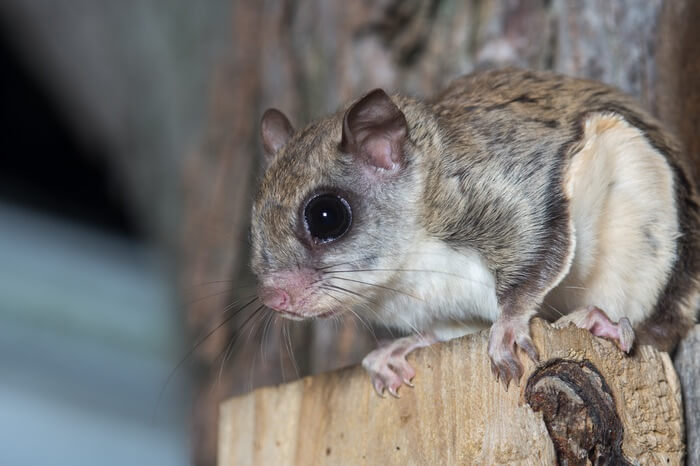
Because flying squirrels spend so much time hopping from one tall branch to another, trees are where these squirrels sleep (and live). They can go to the ground and occupy holes in the case of an emergency. But like standard tree squirrels, they prefer to make dens or occupy existing cavities.
You can find them in similar nests to tree squirrels. These creatures build homes out of twigs, grass, leaves, and moss. Seeing them sleeping in hollowed-out cavities and on tree branches is pretty normal, too.
Flying squirrels are more likely to work with others compared to ground or tree squirrels. Collaborative nest building is not too uncommon, and is more likely to occur in colder conditions.
This variety of squirrels believes in safety in numbers. So, groups can form as they establish a nesting spot and prepare for cold winters ahead.
If flying squirrels have access to seemingly abandoned structures, they’ll take advantage of them. These critters are known to migrate to attics, shed rafters, and other covered structures.
Does This Change During Winter?
Standard dreys, cavity nests, and underground burrows are acceptable when the weather is temperate. But where do squirrels sleep when winter rolls around?
Ground squirrels have the easiest time during the winter months. They spend up to five months in hibernation! During this time, the squirrel will lower its body’s metabolic processes to conserve energy. It’s the same thing that much larger mammals do.
Quick Tip: Interestingly enough, they’re not always asleep. These critters still spend up to 20 hours a week awake. However, they always stay in the protection of their tunnels.
In the months prior to winter hitting, ground squirrels will spend extra time fortifying their burrows and collecting food to last through hibernation.
Now, tree squirrels and flying squirrels are a bit different. They do not hibernate at all. As a result, these squirrels have to take extra precautions to stay safe and warm.
Tree squirrels will typically fortify their nest for better insulation so they can stay out of the elements and sleep comfortably. Many chew up more wood to create a hardened shell around dreys. You might also observe protective walls going up around cavity dens.
Squirrels may venture out during the harsh winter, but they need warm nests to get some sleep. The need for insulated homes is even greater for squirrels that have babies.
Flying squirrels will adopt many of the same fortification habits as traditional tree squirrels, but they take things a little further by inviting others into the mix. Flying species are more sociable and rely on large numbers for safety.
Groups of ten or more squirrels will work together to create a nest before winter hits. Once the harsher weather comes, they’ll huddle up and rely on body warms to survive. Pair that with thicker nest walls and better insulation, and these squirrels are prepared to rough it during even the most difficult snowy winters.
When Do Squirrels Sleep?
Squirrels can be both diurnal and crepuscular. Diurnality means that squirrels are active during the day and sleep during the night. However, being crepuscular means that they’re most active at dawn and dusk.
Ever wonder why you never see any squirrels around in the blazing midday sun? Most are taking it easy at that hour.
Squirrels get up early to take care of business and find food. The mammal might return to the nest to sleep several hours or simply take things easy as they eat and rest. Either way, most aren’t going to be super energetic as the sun shines overhead.
There are some exceptions. Some squirrels relish in the sunlight and spend as much of the day out of the nest as possible. However, they are the exception rather than the rule.
When the sun starts to set, squirrels can exhibit a final energy push for the day before heading back to the nest to sleep again. Generally, you can assume that a squirrel is sleeping any time they are in the nest (which is usually at night).
How Much Do Squirrels Sleep?
Believe it or not, squirrels spend a lot of time sleeping!
People are so used to seeing these critters being hyperactive and all over the place. It’s hard to imagine them losing hours of daylight in dreamland. However, most squirrel species will sleep up to 15 hours every single day.
Of course, that’s just the average. Some squirrels are more or less active. Every creature is different, but 15 hours is a good baseline.
Despite their energetic demeanor, squirrels use up their biological fuel pretty quickly. That’s why they have to be strategic about when and how they find food.
Newborn squirrels will sleep even more. After birth, babies are born deaf and blind like most mammals. It takes several weeks for the offspring to gain their senses and become independent.
During this time, they’ll rely on mothers for everything. The babies stay in the nest until they’re about eight weeks old. At that point, they’ll venture out and find a nest of their own to sleep!
Conclusion
As you can see, the places squirrels sleep aren’t exactly surprising. It’s really their active nature that makes this seem like such a mystery!
Let us know if you have any questions about where squirrels sleep, or how to deal with squirrel-related issues in your lawn. We’re always happy to help.
